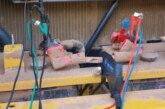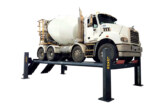How to rectify trailer brake issues

Recognising, diagnosing and rectifying trailer brake issues are part and parcel of trailer management. Here, BPW gives advice on what to look for and what to do.
As the demand for efficient transportation continues to surge, the reliability of trailer braking systems becomes paramount. Trailers are the unsung heroes of the road, bearing the weight of commerce on their axles. However, even the most robust trailers can face braking system challenges.
BPW’s service and support team frequently assist in diagnosing issues with trailer braking systems. Nowadays, an electronic braking system (EBS) offers technological support for fault diagnosis. EBS typically includes parameter settings indicating trailer behaviour during braking, and on-board diagnostics recording braking history. When faced with unresolved braking problems, delving into the EBS parameter settings and diagnostics may provide valuable clues. Accessing this information requires the manufacturer-supplied PC interface and software.
Problem causes can be largely split into three: the foundation brake (disc or drum), the trailer brake control system – EBS or ABS (anti-lock braking system) – and the towing vehicle. We can’t emphasise enough the need for a comprehensive understanding of these areas, making fault diagnosis and rectification less challenging.
Foundation issues – brake linings and pads: very often, the clues to the cause of a problem lie in the condition of the friction material (brake linings or pads) or the friction surfaces (drums or discs). Whilst symptoms may appear similar, it must be borne in mind that as disc brakes run hotter than drum brakes, these symptoms will vary across the two.
Case one: annual mot test and brake performance failure: a trailer is presented for the annual MOT test and fails on brake performance; very often, this is its first test. The driver has not complained about poor brakes, so the first thing that we would do is look at the condition of the friction material or surfaces.
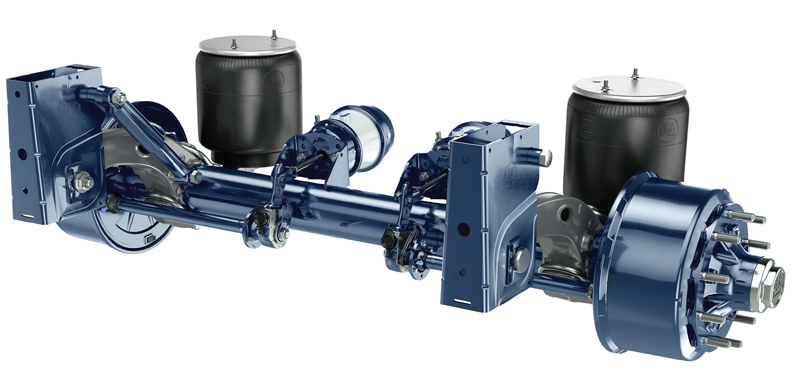
In most cases, it will be seen that either the brake linings or pads exhibit very little wear for the mileage that the vehicle has covered and the drum or disc have a sheen on the surface. This is a classic case of brake under-utilisation sometimes referred to as glazing. With endurance braking (retarders and engine braking) included as standard on most modern towing vehicles, this is a very common problem. With EBS, the towing vehicle has control of the braking balance between the tractor and trailer. Sometimes adjustments can be made on the trailer’s EBS but very often the remedy lies in liaison with the towing vehicle manufacturer to get them to adjust it to the tractor EBS.
Understanding MOT time anomalies: people ask why poor braking performance occurs at MOT time when the driver has previously not complained about poor braking. The answer to this question lies in understanding the braking pressure: when driving normally, the brake pressure delivered to the brake chambers is below 2 Bar ‘Pm’ for 95% of the brake applications. Even when performing an emergency stop, the pressure is no more than 4 Bar ‘Pm.’ During a roller brake test (RBT), the pressure is taken up to 6.5 Bar ‘Pm.’ Air pressure is directly proportional to friction surface pressure, and it is at these higher pressures that the underutilisation effect takes place.
We see cases where the vent plug bungs have not been removed from the brake chambers. This is especially troublesome with disc-braked axles but also causes problems with drum-braked axles. Depending on which plugs have been left in place, there can be two issues:
a) pressure can be retained in the low-pressure housing, causing a binding brake.
b) there can be a residual vacuum in the housing that has to be overcome by air pressure before the brake can be applied. In this latter case, it will manifest itself as under-utilisation.
Note: sometimes the bungs might be left in on only one or two-wheel stations causing the problem on those corresponding brakes.
Case two: the intricacies of brake relining: a telephone call is received by BPW’s services and support team from a customer complaining of poor brake performance issues. The trailer is two or three years old and, in these cases, the problem has usually been reported by the driver. The clue here is that the brakes have performed well until now. The customer is asked what has changed. For example, is there a new driver or new towing vehicle, or is the trailer being used for different types of work? The normal response is that “nothing has changed, although we relined the brakes a little while ago.”
BPW’s brake linings and pads are balanced with the metallurgy of the friction surfaces, and any deviation in these two components can cause problems. It is important to note that during the manufacture of a trailer, a set of brake calculations is generated using the known parameters of the original equipment specifications of the friction materials. If the brake calculations change, then the brake performance will also change. When further investigating case two, it revealed that non-genuine linings had been fitted, and this impacted the brake balance.
Brake calculations: we offer a brake calculation service to trailer builders. These calculations are submitted with type approval documents. Pressures in the braking systems on the tractor and trailer are referenced to the pressure in the yellow service connection (coupling head) between the two, as it is the only point common to both systems, referred to as ‘coupling head pressure’ (‘Pm’).
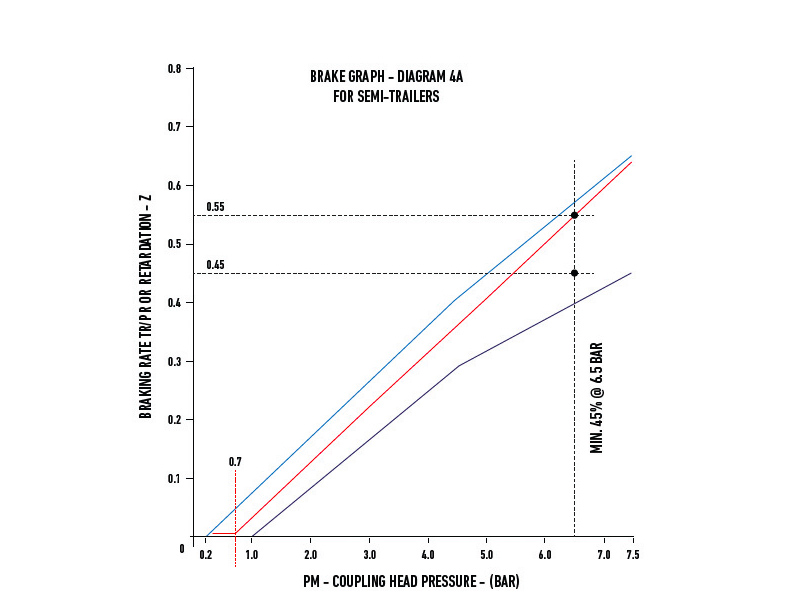
During calculations, variables such as wheelbase, centre of gravity, height, weight, and tyre size are all considered. The calculation produces a graph of retardation versus coupling head pressure. If you look at the typical graph for a semi-trailer in Fig. 1, you will see that the performance curve (the red line) lies between two blue lines which form an upper and lower bound. These blue lines are referred to as the braking corridor. For semi-trailers, the performance is at 6.5 bar ‘Pm,’ and the ‘coupling head pressure’ must be a minimum of 45%.

There is a similar graph for tractor units shown in Fig. 2. In this case the performance curve is shown as a green line in a black-bounded corridor. For tractor units, the performance at 6.5 bar ‘Pm’ must be a minimum of 50%.
Balancing act
If the brake balance between the tractor and trailer is equal, then the two braking curves would be coincident. Any disparity between the two curves means that either the tractor or trailer will be predominant when braking. A closer inspection will show that the tractor and trailer curves are only coincident at a pressure setting of 1.5 bar ‘Pm.’ This situation is quite normal: 95% of all brake applications occur at a pressure of less than 2 bar ‘Pm.’ By achieving coincidence or compatibility in this region of the graph, then we will have taken a huge step in fulfilling a tractor/trailer combination which has balanced braking.
Now let’s have a look at the principles of analysis using data from the EBS or by conducting dynamic testing methods.
EBS systems: the first thing to check is that the parameter settings agree with the calculation for that semi-trailer. BPW engineers will be able to advise if the parameters are normal for the type of vehicle and operation under investigation. Any abnormality here will be compared with the evidence shown on the friction surfaces, and it may be necessary to only adjust the brake calculation and parameter settings to restore normal brake operation.
Dynamic testing: in some cases, you may have to resort to dynamic testing. On early ABS systems, it was sufficient to check tractor and trailer balance with pressure gauges connected to key points within both braking systems; these tests were conducted with the vehicle stationary. With EBS, the brake settings are modified dynamically by the tractor unit during journeys, so static testing is no longer valid. BPW has developed a dynamic testing procedure for EBS tractor and trailer units to establish dynamic predominance and make the necessary adjustments.
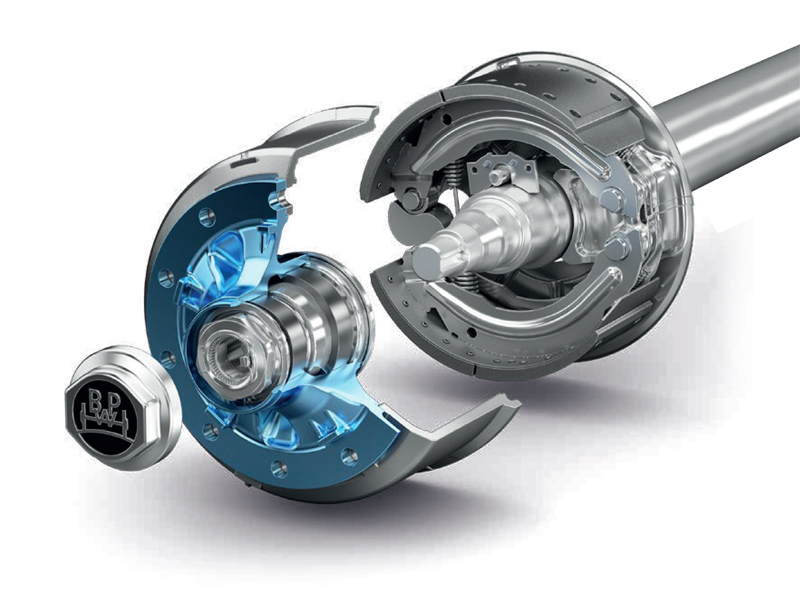
As we traverse the highways and byways, the reliability of trailer braking systems emerge as a non-negotiable aspect of road safety. As an industry leader committed to innovation and tailored solutions, BPW stands at the forefront, ensuring that trailers on BPW running gear navigate the roads with confidence.






![Bosch outlines ESI[tronic] workshop software](https://cvwmagazine.co.uk/wp-content/uploads/2025/07/Bosch-ESItronic-25-165x109.jpg)
